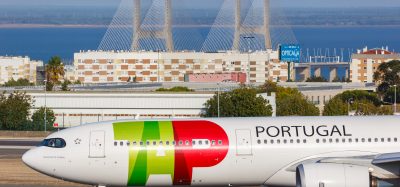Aircraft Recovery – Exciting Times: Trends, Innovations & Developments
- Like
- Digg
- Del
- Tumblr
- VKontakte
- Buffer
- Love This
- Odnoklassniki
- Meneame
- Blogger
- Amazon
- Yahoo Mail
- Gmail
- AOL
- Newsvine
- HackerNews
- Evernote
- MySpace
- Mail.ru
- Viadeo
- Line
- Comments
- Yummly
- SMS
- Viber
- Telegram
- Subscribe
- Skype
- Facebook Messenger
- Kakao
- LiveJournal
- Yammer
- Edgar
- Fintel
- Mix
- Instapaper
- Copy Link
Posted: 26 May 2009 | John A. Olsen, Senior Program Manager for International Activities, Fraport AG Fire Training Center | No comments yet
It’s an exciting time in the world of aircraft recovery and it is worth sharing this excitement, some of the trends, innovations and new developments with the aviation community. Most airlines and airports would prefer that aircraft recovery not be a part of their normal business, because, when we talk about aircraft recovery, we generally relate this issue to situations that disrupt normal operations and present many challenges for the airlines, as well as airport operators. However, the topic is always worthy of some good discussion, and let’s face it, none of us, whether we are an airline or airport operator, are immune to the challenges that a disabled aircraft brings.
It’s an exciting time in the world of aircraft recovery and it is worth sharing this excitement, some of the trends, innovations and new developments with the aviation community. Most airlines and airports would prefer that aircraft recovery not be a part of their normal business, because, when we talk about aircraft recovery, we generally relate this issue to situations that disrupt normal operations and present many challenges for the airlines, as well as airport operators. However, the topic is always worthy of some good discussion, and let’s face it, none of us, whether we are an airline or airport operator, are immune to the challenges that a disabled aircraft brings.
Traditionally, the responsibility to recover an aircraft that has become disabled on the runway, or within the aircraft movement area, has been the primary responsibility of the aircraft operator. Many leading airlines maintain aircraft recovery kits and personnel to deal with disabled aircraft recovery incidents and many other airlines have access to recovery equipment through participation in the International Airlines Technical Pool (IATP). However, in many cases, when an incident occurs, it is extremely difficult to deploy this equipment to the affected airport in a timely manner.
Airports operating a single runway are faced with the difficult challenge of obtaining equipment via ground transportation, which significantly delays the receipt of the critically needed equipment and causes longer runway closure times. It goes with out saying that, when an aircraft becomes disabled on the runway, airport operations are crippled and the airport will immediately begin to lose revenue. The cost resulting from a single disabled aircraft recovery incident is astronomical and unlike the aircraft, these losses are non-recoverable. Even simple incidents create major challenges and could cause airport operations to come to a halt. Regardless of the complexity of the situation, the airports and airline carriers losses can quickly run into the millions, making the safe and timely removal of the disabled aircraft essential.
In the past, many airports have relied solely on the airlines’ ability, and their responsibility to take the appropriate actions, to remove an aircraft in a timely fashion once it has become disabled. Over the past few years we have seen an increase in the number of aircraft incidents that have resulted in aircraft becoming disabled and airports having to stop operations for extended periods of time. With the increase in recovery incidents and the recognition of great financial losses, we see a trend today that more and more airport operators have realised the financial impact that can be caused by a disabled aircraft incident. The need to develop their own ‘organic’ recovery capability, to support the airlines in the recovery effort, is becoming apparent.
Planning, equipping, and training for aircraft recovery is not a simple task. The key ingredient for the development of an effective and efficient plan, is the close coordination and well balanced effort from all agencies that will be involved. This includes the airport authority, the airline industry, airline operators, maintenance crews, ground crews and local authorities. Quite a few airports, small and large, regional and international, have changed direction and are now making large investments in the procurement of aircraft recovery equipment. They are establishing aircraft recovery teams, revising or developing emergency plans and working closely to create the synergy needed between the airlines and airports to take on the recovery challenge and be capable of conducting safe and expedient aircraft recovery operations. This is a trend in the right direction and should continue.
When an aircraft becomes disabled we have an automatic ‘lose-lose’ situation for both the airline and airport involved. Airports and airlines need to turn this ‘lose-lose’ situation into a ‘win-win’ situation, by working together and jointly sharing the aircraft recovery responsibility. Airports that maintain aircraft recovery equipment and have organic recovery capability, to include trained personnel to perform recovery operations, should work closely with the airlines at their respective airports and the airlines recovery teams, to jointly develop procedures that are in the best interest of both the affected airline and airport. This will help to ensure the timely removal of the disabled aircraft. Airports who maintain recovery capability should make this capability known to airline station managers and these capabilities should be included in the station managers’ contingency plans.
The conception of the A-380 and other New Large Aircraft (NLA), in production or on the drawing board, has had a very positive effect on the technological advancements of aircraft recovery equipment. The recovery challenges posed by very large aircraft have forced many organisations to take a closer look at their current procedures and equipment requirements.
Aircraft recovery teams and equipment manufacturers are now challenged to deal with aircraft of increased complexity, have to cope with modern composite fuselage construction, and must confront aircraft with increased wing height and total aircraft weight. The challenges of performing recovery have forced leading aircraft recovery equipment manufacturers to go back to the drawing board and develop new approaches to recovery procedures and to design and produce recovery equipment of suitable capacity.
Performing an aircraft recovery requires detailed preparation and pre-planning, technical skill and competency, speciality equipment and extensive physical labour. When it comes to speciality equipment, we are fortunately seeing a ‘new dimension’ in technology. Equipment manufacturers have developed aircraft lifting bags with increased lifting capacity, recovery jacks that are capable of lifting 63 tonnes, lightweight temporary road systems that are easy to deploy and lifting columns that provide enhanced stability and capacity. The efforts of the equipment manufacturers, and their innovative equipment designs, are very much welcomed by those working in the recovery business. The improved equipment technology and the availability of modern ‘high-tech’ recovery tooling is significantly improving aircraft recovery capabilities.
Working behind the scenes is a group of aircraft recovery specialists from the airlines, aircraft manufacturers, airport operators and equipment manufacturers, working together to improve aircraft recovery technology, equipment and preparedness. The Aircraft Recovery Task Force (ARTF) of the International Air Transport Association (IATA), has for many years been very busy facing the challenges of aircraft recovery and has made some very exciting and significant contributions to the aircraft recovery business. This group of professionals meet periodically each year and take on a variety of specific issues relating to effective aircraft recovery operations. In 2008, the ARTF was able to reach many milestones by completing the study and recommendations for equipment packages for the A-380.
Another major highlight of the group’s accomplishments was the complete revision and publication of the Airport Services Manual, Part 5, Removal of Disabled Aircraft. This revised manual, now available through the ICAO Publications department, contains updated guidance on the removal of disabled aircraft and is intended to be used by aircraft and airport operators for planning the processes required to conduct safe and efficient aircraft recovery operations. The new manual has been expanded to include specific emergency planning guidance, recommended operational procedures and guidance relating to specific aircraft recovery equipment and tooling.
Looking into the future, the ARTF will meet in Ontario in June 2009, to finalise a year long effort in developing standardised training and certification programmes for personnel involved in recovery operations. The objective of this initiative is to ensure that all personnel engaged in performing aircraft recovery operations possess the appropriate levels of skills and professional competency, to access the situation, select the appropriate recovery method and equipment and safely execute the recovery operation.
A critical aspect of an agency’s recovery programme should be team training. Organisations performing aircraft recovery operations should develop training concepts that ensure all recovery team members have the necessary knowledge and skills to implement safe aircraft recovery operations. As a minimum, training should include; the theory and concepts of aircraft construction, weight control and centre of gravity management, aircraft recovery methods and techniques, tools, scene safety and hazard control. It is essential that academic training be enhanced by performance based application of skills, through realistic practical training sessions. The training standards currently being developed by the ARTF will achieve these goals.
During the June 2009 meeting, the ARTF will take a close look at the challenges in recovering aircraft with composite structures, discuss the importance of interface between airports and airlines during recovery operations, network with equipment manufacturers to learn about new product developments and share lessons learned from recent recovery operations. The ARTF provides an excellent platform for those involved in recovery operations. The combined efforts of the group’s membership have and continue to take on many initiatives, and is the driving force behind the many advancements in this technical area of speciality.
As you can see, there is a lot going on in the world of aircraft recovery and the challenges will continue in the future. In recent years, many challenging recovery operations that reached headline news were performed, to include the miraculously executed landing and recovery of the US Airways A-320 from the Hudson river, the recovery of the Boeing 777 in London Heathrow and the recovery of the A-340 over-run in Quito. Unfortunately, many more incidents occur than are reported. In fact, simple incidents such as a blown tire, collapsed gear, or the aircraft being stuck in the mud after an over-run, occur quite regularly and these incidents, although they do not make headline news, have a great impact on airport operations. Active participation, joint involvement and cooperation between the aircraft industry, airlines, airport operators and recovery equipment manufacturers is essential to meet the continued challenges of aircraft recovery.

















